Reykjavik may be small, but it punches well above its weight as Iceland’s cultural and economic hub. These fascinating facts reveal what makes the world’s northernmost capital so special.
Our tour of the Nordic region continues by heading to Iceland. Specifically, we're off to the island nation's small capital, Reykjavik. With a population of just 233,000, it boasts a unique distinction of being both intimate and cosmopolitan.
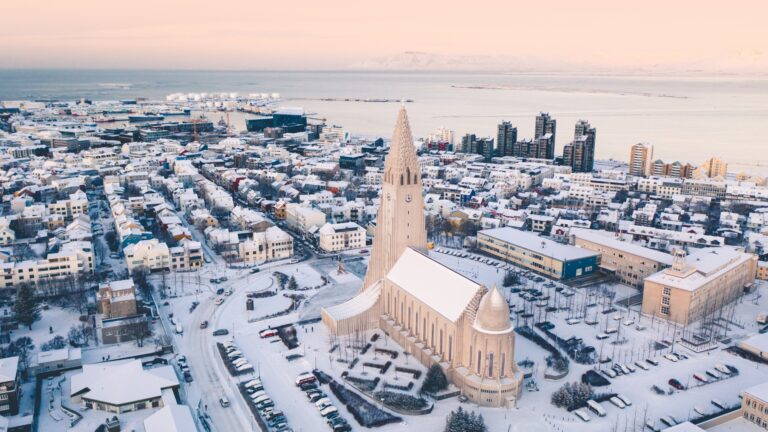
Indeed, despite its modest size by global standards, Reykjavik is a powerhouse, significantly influenced by its status as the administrative and cultural capital of Iceland.
Home to nearly two-thirds of Iceland’s total population, Reykjavik serves as a central hub for both locals and tourists alike. The city offers a rich array of activities throughout the year.
Visitors can delve into the depths of Iceland's Viking heritage, explore the contemporary art scene, or unwind in the soothing warmth of its numerous geothermal pools.
Additionally, Reykjavik is a window to the natural wonders of Iceland, serving as a starting point for adventures into the volcanic landscapes that define this rugged island nation.
In preparation for your visit, or simply to satiate your curiosity about this unique city, here are 10 fascinating facts about Reykjavik that highlight its history, culture, and its pivotal role in Iceland's charm and allure.
1. The northernmost capital
Reykjavik proudly holds the title of the world's northernmost capital city of a sovereign state. Sitting at 64°08′ N, this Arctic-edge capital is more than just a geographical curiosity. It’s a city where nature and urban life blend in remarkable ways.
The high latitude means that Reykjavik experiences dramatic seasonal contrasts in daylight. In the depths of winter, the sun barely peeks above the horizon, casting only a few hours of soft twilight each day.
Conversely, summer brings endless light, with the sun dipping just below the skyline before rising again, creating the enchanting phenomenon of the midnight sun.
These shifts influence the scenery but also daily life. Locals adapt their social rhythms, working hours, and even mental health habits around the changing light.
Cosy winter gatherings and late-night summer strolls become not just seasonal activities, but cultural rituals. It’s part of what makes living and visiting Reykjavik so distinctive.
2. Reykjavik means ‘Smoky Bay'
The name Reykjavik, which translates as ‘Smoky Bay,’ is deeply rooted in both language and landscape.
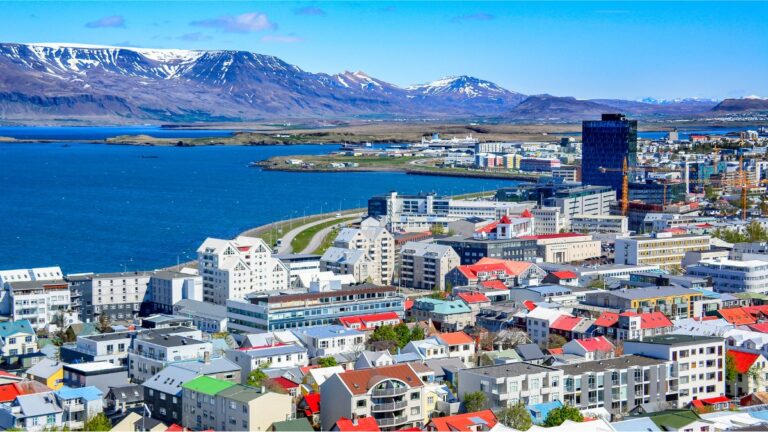
According to tradition, the name was coined by Iceland’s first permanent settler, Ingólfur Arnarson, in the 9th century. As he approached the shores, he saw steam rising from the area’s many geothermal hot springs, a striking sight in the cool northern air.
The phenomenon left such an impression that it inspired the name of the settlement itself.
The word vik, meaning bay, is commonly found in coastal place names across the Nordic countries, from Narvik in Norway to Vik in southern Iceland. In Reykjavik’s case, it reflects both its maritime setting and its place in a wider Nordic naming tradition.
The name captures a central theme in Icelandic identity: the powerful, ever-present influence of nature. In a country shaped by geothermal energy, volcanic activity, and raw coastal beauty, it’s only fitting that the capital’s name speaks directly to the land itself.
3. Reykjavik is a literary hotspot
For a small city, Reykjavik has a remarkably big reputation in the world of books. In 2011, it became the first non-native English-speaking city to earn the title of UNESCO City of Literature, an honour that speaks volumes about its cultural life.
This recognition is not only a nod to Reykjavik’s vibrant present-day literary scene, but also to its historical importance.
Iceland’s medieval manuscripts, particularly the sagas, are treasured globally for their insights into Norse mythology, early Scandinavian history, and human storytelling at its rawest.
Many of these sagas were preserved thanks to centuries of oral tradition and later written transcription, with Reykjavik playing a central role as the intellectual heart of the country.
Today, Reykjavik celebrates this literary legacy through regular book festivals, author talks, and a thriving independent publishing scene. Books are cherished in Icelandic culture, so much so that new titles flood the market every Christmas during the Jólabókaflóð, or “Christmas Book Flood.”
4. Puffins call Reykjavik home
It might come as a surprise, but Reykjavik is the only capital city in the world with a substantial puffin population nearby. These distinctive seabirds—with their colourful beaks and clumsy charm—nest by the thousands on the small islands just off the coast.
Iceland is home to over 60% of the world’s Atlantic puffin population during the breeding season, and the waters near Reykjavik are no exception.
Akurey and Lundey, two uninhabited islands just a short boat ride from the old harbour, are teeming with birdlife. Akurey alone hosts more than 20,000 pairs of breeding puffins each summer.
From May to August, puffins return to these rocky outcrops to nest, offering birdwatchers and nature lovers a rare opportunity to see them up close without leaving the capital area.
In a city where nature is never far away, the puffins serve as a reminder of Reykjavik’s unique position at the edge of the wild North Atlantic.
5. Reykjavik's tallest building is a church
The most prominent architectural landmark in Reykjavik is Hallgrimskirkja church, which at 244 feet stands as the tallest building within the city limits.
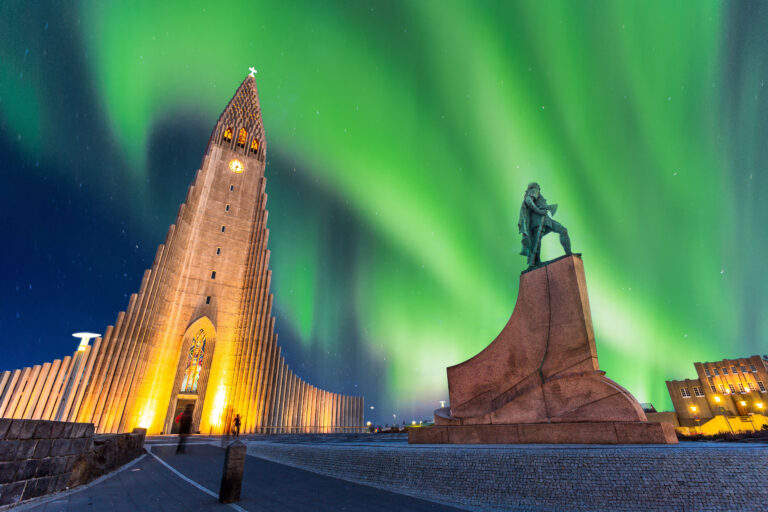
Surpassed in height only by an office building in the neighbouring suburb of Kopavogur, Hallgrimskirkja's towering presence has been a defining feature of the city's skyline since its completion in the 1980s.
This iconic church, perched atop a hill, is not only a significant place of worship but also a beacon of cultural identity, drawing visitors from around the world. Its unique design, inspired by Iceland's volcanic basalt columns, makes it a striking symbol of national heritage and artistic innovation.
The church also offers a viewing deck, providing panoramic views of the city and its surrounding landscapes, enhancing its status as a must-visit destination in Reykjavik.
6. The Leif Erikson statue was a gift
Standing tall in front of Reykjavik’s iconic Hallgrímskirkja church is a striking statue of Leif Erikson, the Norse explorer widely believed to have reached North America around the year 1000, centuries before Christopher Columbus.
What many visitors don’t realise is that this statue wasn’t commissioned by Iceland, but gifted by the United States. The gesture came in 1930, as part of the Althing Millennial Festival, a national celebration marking 1,000 years since the founding of Iceland’s parliament, the world's oldest.
The statue symbolises not only the deep historical ties between Iceland and its Viking past, but also the cultural connections between Iceland and North America.
For Icelanders, Leif Erikson represents both adventurous spirit and national pride. For Americans, the gift acknowledged shared heritage and mutual respect.
7. Harpa Concert Hall is a modern icon of Reykjavik
Harpa Concert Hall is a stunning emblem of modern Icelandic culture and architecture. Situated on the edge of Reykjavik’s harbour, it catches the eye with its distinctive glass façade, designed to reflect both the city lights and the natural landscape around it.
The building, completed in 2011, was designed by the Danish firm Henning Larsen Architects in cooperation with Icelandic architectural company Batteríið Architects, and features an iconic geometric glass structure created by artist Olafur Eliasson.
Harpa is not just a feast for the eyes; it is also an acoustical marvel, renowned for its exceptional sound quality.
It serves as the home of the Iceland Symphony Orchestra and the Icelandic Opera, and hosts a range of performances from classical to contemporary music, as well as conferences and cultural events.
The concert hall has quickly become a cultural hub in Reykjavik, drawing visitors and artists from around the globe.
Its presence on the waterfront symbolizes Iceland’s historical and cultural connection to the sea while showcasing its forward-looking approach to arts and cultural expression.
8. The Viking Ship sculpture
Another notable landmark of Reykjavik is the striking Viking ship sculpture, officially known as the Sun Voyager (Sólfar).
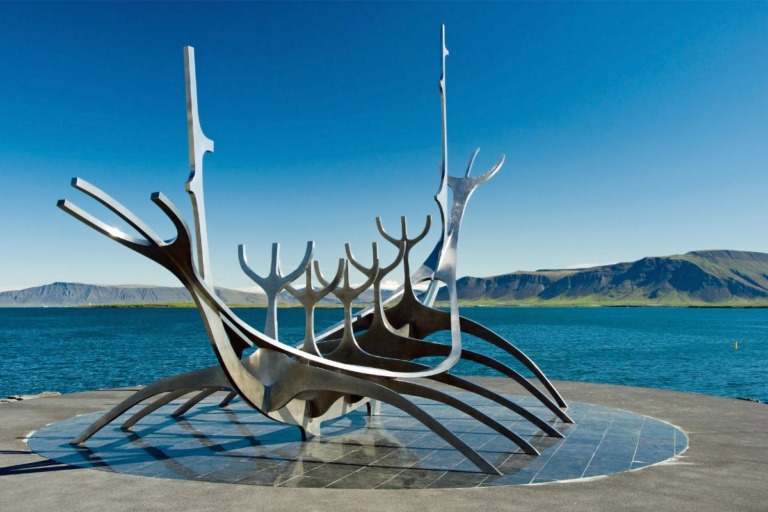
Situated along the scenic waterfront, this stainless steel sculpture was created by Jón Gunnar Árnason. It is an ode to the sun and a dream of hope, freedom, and progress, symbolising the Viking past of Iceland and the historic voyages across the Atlantic.
The Sun Voyager is particularly beloved for its picturesque location and the way it beautifully captures the light during sunrise and sunset. It is one of the most photographed sites in Reykjavik.
9. Reykjavik is heated by geothermal activity
Reykjavik’s warmth, both literal and cultural, comes from the natural forces beneath the ground. Thanks to Iceland’s location on the Mid-Atlantic Ridge, the country is rich in geothermal energy, and Reykjavik is one of the best examples in the world of how this resource can be harnessed.
Nearly 90% of all buildings in Iceland are heated using geothermal water, including homes, schools, swimming pools, and greenhouses. In Reykjavik, hot water is piped directly from nearby geothermal fields such as Nesjavellir and Hellisheiði to provide reliable and sustainable heating throughout the city.
This environmentally friendly system keeps residents warm during the long winter months while helping Iceland maintain one of the lowest per-capita carbon footprints in the world.
Geothermal energy is also behind some of Iceland’s most popular attractions. The naturally heated, mineral-rich waters of the Blue Lagoon are perhaps the most famous example, but locals are just as fond of the many outdoor pools and hot springs found in and around the capital.
10. There is no rail system
Currently, Iceland lacks an intercity railroad network, a result of its sparse population and challenging terrain. Although there are proposals for a high-speed rail line connecting Reykjavik and Keflavik Airport, the plans have yet to materialise.
Nevertheless, Reykjavik hosts two historical steam locomotives, relics from a bygone era, once used in the construction of harbour breakwaters in the early 20th century.
These locomotives serve as a nod to Iceland's industrial past and are on display for public viewing.
11. Murder is rare
Reykjavik is widely regarded as one of the safest capital cities in the world. Serious crime is rare, and violent crime even more so, creating a strong sense of security for both residents and visitors.
This peaceful reality stands in contrast to the often dark and gritty image portrayed in Iceland’s popular Nordic noir crime fiction. While the genre has captivated readers with tales of murder and mystery set against dramatic Icelandic landscapes, the truth is far more tranquil.
According to the country’s Minister of Justice in 2019, Iceland recorded just 37 intentional homicides over the previous two decades. This exceptionally low number reflects a society built on trust, strong social systems, and a relatively small, closely connected population.
12. Reykjavik rarely enjoys a hot summer
Reykjavik is known for its cool and unpredictable weather, even during the height of summer. While other European capitals may bask in heatwaves, Reykjavik remains mild, breezy, and often cloudy.
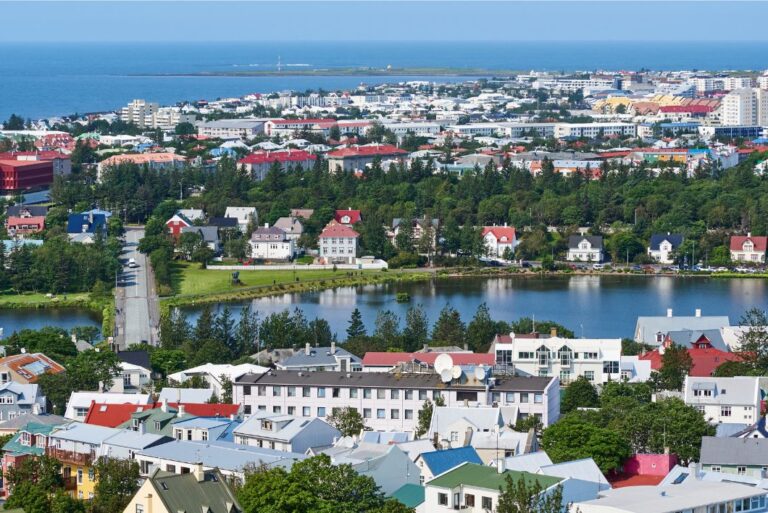
The highest temperature ever recorded in the city was just 78.3 degrees Fahrenheit (25.7 degrees Celsius), a record set in July 2008. Such temperatures are considered exceptional, not the norm.
This consistently mild climate is shaped by Iceland’s location in the North Atlantic, where ocean currents and maritime weather systems play a major role. Locals tend to make the most of sunny spells when they come, but overall, summer in Reykjavik is more about light than heat.
13. Reykjavik's climate is changing
Reykjavik’s climate, like much of the Arctic region, has been shifting in recent decades.
Based on historical data from 1960 to 1990, the city was typically classified as having either a subpolar oceanic climate (Köppen Cfc) or a subarctic climate (Köppen Dfc), depending on the specific data set.
However, more recent observations from 2000 to 2014 consistently place Reykjavik within the subpolar oceanic category. This reclassification reflects a gradual warming trend, which is part of a wider pattern of climate change affecting the entire North Atlantic and Arctic regions.
While temperatures in Reykjavik remain cool year-round, the climate is becoming slightly milder over time. This has implications not only for seasonal weather patterns, but also for local ecosystems, infrastructure planning, and long-term sustainability efforts in the capital and beyond.
14. There are no McDonald's restaurants in Reykjavik
Reykjavik also stands out for its absence of McDonald's restaurants. The last McDonald's in the country closed in 2009 during the global financial crisis, primarily due to the high cost of importing ingredients required by the franchise.
Since then, McDonald's has not re-established a presence in Iceland.
For those seeking fast food options in Reykjavik, local establishments like Metro offer menu items reminiscent of McDonald's, including burgers and fries. Additionally, international chains such as KFC, Domino's, and Subway operate in the city.
A notable piece of McDonald's history remains on display at Snotra House in southern Iceland, where the last cheeseburger sold in 2009 is preserved and exhibited as a curiosity.

